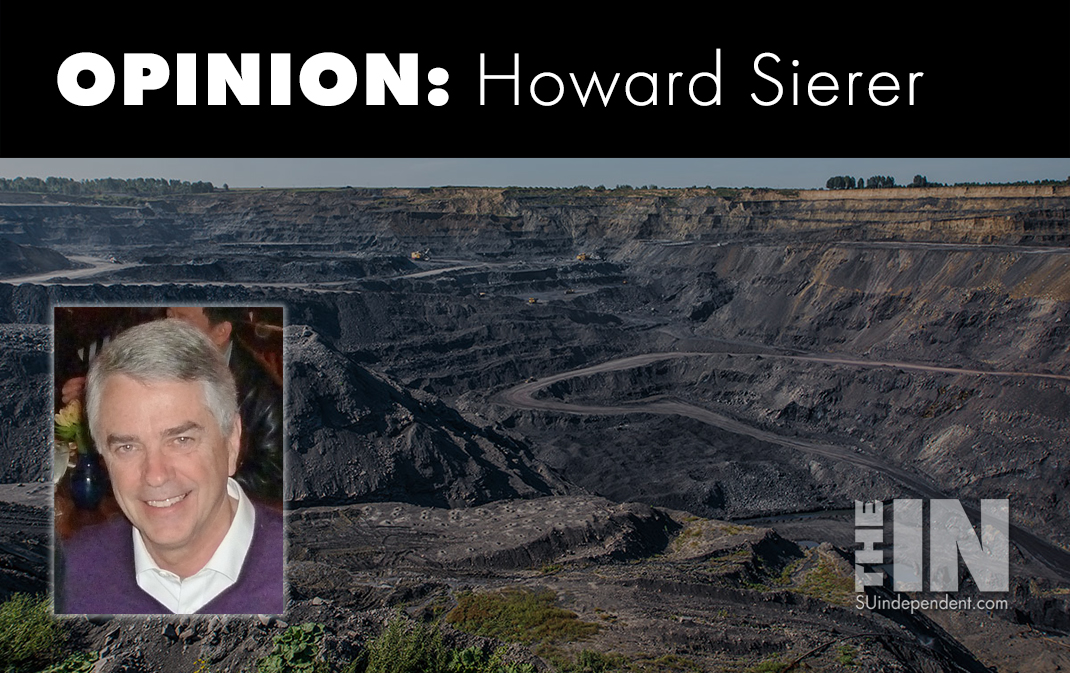
An Alternative for Utah’s Disappearing Coal Mining Jobs
Coal mining is a slowly dying industry and with it, jobs for coal miners are disappearing. Central Utah’s rural coal-producing counties have been in steady decline for the last decade but if common sense prevails, well-paying, long-term jobs in those counties can be created.
Coal-fired power generating plants have been the backbone of the world’s electricity-generating infrastructure since Edison invented the light bulb. Coal survived its acid rain crisis in the 1970s by installing scrubbers that removed up to 95% of pollution-causing sulfur dioxide.
But the carbon dioxide produced by burning coal is a different breed of cat and contributes to climate change. While various techniques have been demonstrated that remove or sequester carbon dioxide, none has proven cost-effective on a large scale.
The U.S. has the world’s fourth-largest natural gas reserves and gas-fired electricity generation has taken off in the last several decades as natural gas prices dropped. Gas-fired plants release significantly less carbon dioxide than do coal-fired plants per unit of electricity output.
As a result, U.S. coal production has nosedived in the last decade with little prospect of arresting its fall. With it, the number of coal mining jobs in the U.S. in 2020 has dropped to less than half the number employed in the industry in 2010.
Wolverine Fuels operates three mines in Utah which supply power plants in Utah and the western U.S. But two of its largest customers are switching away from coal in the next few years.
The Intermountain Power Plant in Delta, Utah, operated by the Los Angeles Department of Water and Power, will switch from coal to natural gas to conform to recent California legislation. NV Energy is shutting down its Humboldt County, Nevada, coal-fired power plant and replacing it with solar.
Reduced demand for Wolverine’s coal will result in fewer mining jobs in Utah’s Carbon, Emery and Sevier Counties. What happens to Wolverine’s 930 employees and to the employees in stores and businesses that depend on them is a major concern.
“How is rural Utah going to replace that revenue?” asks Kent Wilson, an Emery County commissioner. “We will become a poor county the day the power plants shut down.”
The process of new industries and companies rising while others fade and go out of business was described by Nobel-prize-winning economist Joseph Schumpeter as capitalism’s “creative destruction.”
Solar and wind power generation industries are creating new jobs across the country but in most cases, those jobs are not where today’s coal mines are. Case in point, central Utah. Further, the average national wage for coal miners is $28.53 per hour while so-called “green jobs” average in the low $20s per hour.
Attempting to address these economic impacts, a Coal Country Strike Team was formed with the goal of revitalizing coal-dependent areas. Its partners include the University of Utah’s Kem C. Gardner Policy Institute and Utah State University along with several central Utah local government bodies.
I wish them well but they are swimming upstream: attracting tourists will be a tough sell competing with Utah’s multitude of National Parks and Monuments. Likewise, attracting industry is unlikely without an experienced labor base and ready access to markets.
There is a solution, a win for Utah’s coal country, a win for reliable base-load, always-on power generation, and a win for the environment.
The Blue Castle Project is a proposed nuclear power plant near Green River in Emery County, Utah. Building the plant would create about 4000 construction jobs with 800-1000 permanent jobs for years to come. While not every coal miner would possess the needed skills, miners’ familiarity with electrical and mechanical equipment would allow many to remain employed in the area, sustaining local businesses and government finances.
Nuclear power is anathema to the environmental left. Right on cue, various environmental groups have done all they could for the last 10+ years to block the project, tying it up in court.
But dreams of 100% solar and wind power generation have always been just that, dreams. Without always-on baseload power generation sources, the nation would go dark on cloudy, windless days. No battery technology in place today or in development can provide the reliable power our very lives depend on.
While the Biden administration has stated unequivocally that it wants to put oil and gas companies out of business, Michael Shellenberger explains on Substack that “National leaders around the world are announcing big plans to return to nuclear energy now that the cost of natural gas, coal, and petroleum are spiking, and weather-dependent renewables are failing to deliver.” Biden is out of step.
Oh, and by the way, nuclear power generation produces zero carbon dioxide, uses only small amounts of land, and can be safely located anywhere reliable power is needed.
The Blue Castle Project would be a win for the nation’s power grid and for Utah’s beleaguered coal miners. I urge the anti-nuclear crowd to get real and take a pick: either fossil fuels or nuclear power. We must have one or the other; eliminating both doesn’t work.
Viewpoints and perspectives expressed throughout The Independent are those of the individual contributors. They do not necessarily reflect those held by the staff of The Independent or our advertising sponsors. Your comments, rebuttals, and contributions are welcome in accordance with our Terms of Service. Please be respectful and abide by our Community Rules. If you have privacy concerns you can view our Privacy Policy here. Thank you!
Click here to submit an article, guest opinion piece, or a Letter to the Editor




